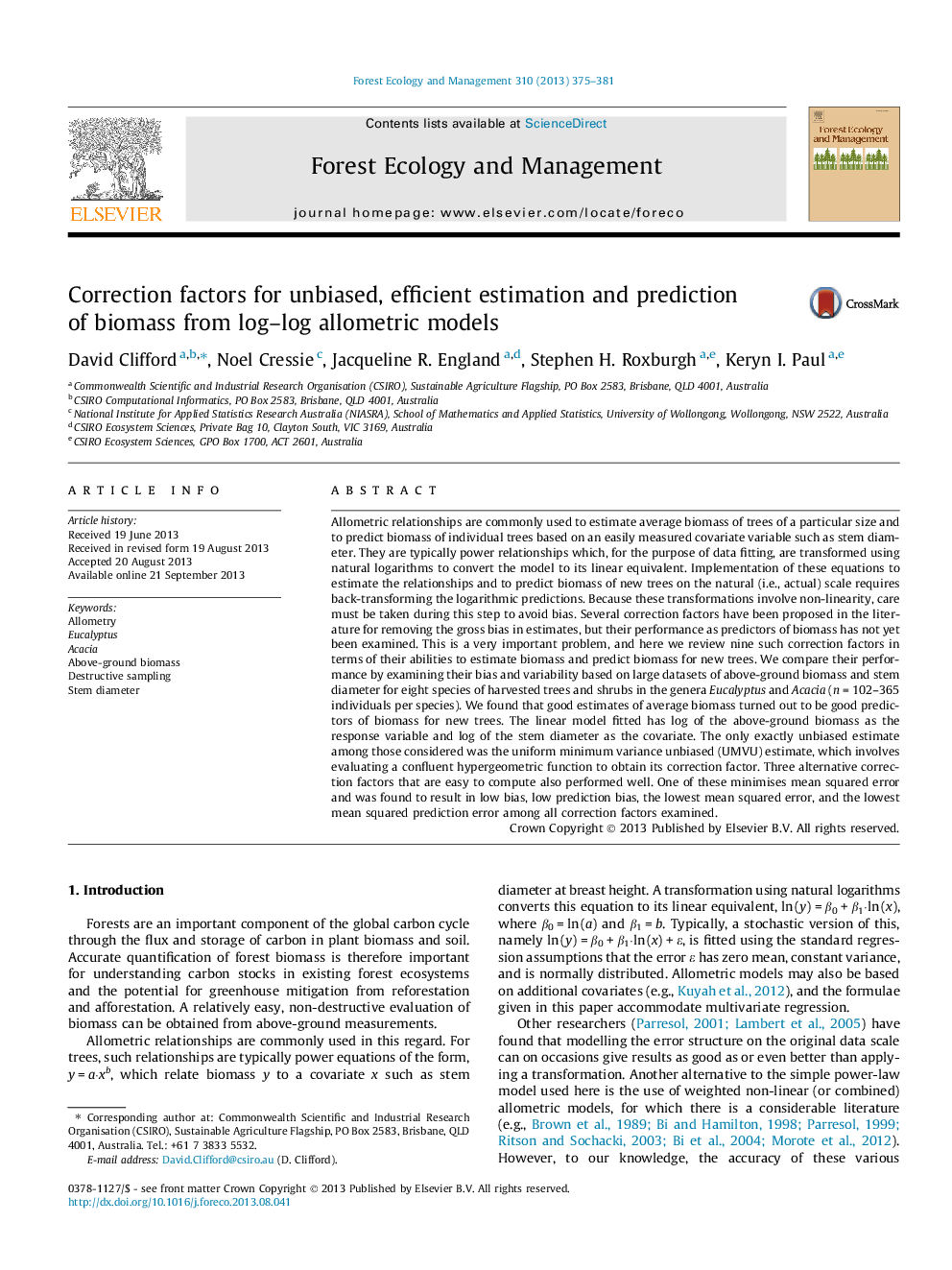| کد مقاله | کد نشریه | سال انتشار | مقاله انگلیسی | نسخه تمام متن |
|---|---|---|---|---|
| 6543724 | 159212 | 2013 | 7 صفحه PDF | دانلود رایگان |
عنوان انگلیسی مقاله ISI
Correction factors for unbiased, efficient estimation and prediction of biomass from log-log allometric models
دانلود مقاله + سفارش ترجمه
دانلود مقاله ISI انگلیسی
رایگان برای ایرانیان
کلمات کلیدی
موضوعات مرتبط
علوم زیستی و بیوفناوری
علوم کشاورزی و بیولوژیک
بوم شناسی، تکامل، رفتار و سامانه شناسی
پیش نمایش صفحه اول مقاله

چکیده انگلیسی
Allometric relationships are commonly used to estimate average biomass of trees of a particular size and to predict biomass of individual trees based on an easily measured covariate variable such as stem diameter. They are typically power relationships which, for the purpose of data fitting, are transformed using natural logarithms to convert the model to its linear equivalent. Implementation of these equations to estimate the relationships and to predict biomass of new trees on the natural (i.e., actual) scale requires back-transforming the logarithmic predictions. Because these transformations involve non-linearity, care must be taken during this step to avoid bias. Several correction factors have been proposed in the literature for removing the gross bias in estimates, but their performance as predictors of biomass has not yet been examined. This is a very important problem, and here we review nine such correction factors in terms of their abilities to estimate biomass and predict biomass for new trees. We compare their performance by examining their bias and variability based on large datasets of above-ground biomass and stem diameter for eight species of harvested trees and shrubs in the genera Eucalyptus and Acacia (n = 102-365 individuals per species). We found that good estimates of average biomass turned out to be good predictors of biomass for new trees. The linear model fitted has log of the above-ground biomass as the response variable and log of the stem diameter as the covariate. The only exactly unbiased estimate among those considered was the uniform minimum variance unbiased (UMVU) estimate, which involves evaluating a confluent hypergeometric function to obtain its correction factor. Three alternative correction factors that are easy to compute also performed well. One of these minimises mean squared error and was found to result in low bias, low prediction bias, the lowest mean squared error, and the lowest mean squared prediction error among all correction factors examined.
ناشر
Database: Elsevier - ScienceDirect (ساینس دایرکت)
Journal: Forest Ecology and Management - Volume 310, 15 December 2013, Pages 375-381
Journal: Forest Ecology and Management - Volume 310, 15 December 2013, Pages 375-381
نویسندگان
David Clifford, Noel Cressie, Jacqueline R. England, Stephen H. Roxburgh, Keryn I. Paul,